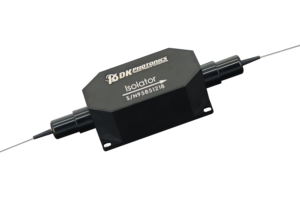With the increasing demand for higher bandwidth and connectivity, the importance of polarization maintaining components has increased exponentially. But why do we need only those components that come with the capability of maintaining polarization? If you also wonder about this, this post will help you understand this in the simplest way.
Before we dive into the need for PM components, it is critical that you understand the meaning of polarization. So, let’s start the discussion with what polarization means.

What is polarization?
Light waves have two oscillating fields: electric field and magnetic field. These two fields are perpendicular to each other and also to the direction in which light propagates. The electric field plane, here, is referred to as the light’s polarization. In general, electric and magnetic fields are oriented randomly. When electric fields of all light waves are aligned parallel to each other, then the light is called linearly polarized.
The Effect of Polarization on Optical Fibers
Though the role of polarization is not much significant in multimode fibers, polarization is very important in single mode fibers, especially in long distance and high speed rate fiber communications. Why?
Why is polarization important for single mode fibers?
Technically, two modes travel in single-mode fibers and these two modes have orthogonal polarization. Perfect single mode fibers cannot differentiate between these two modes because both modes are identical and light energy can shift between two polarization modes. Since the geometry of fibers is not perfect in the real world, both modes travel at slightly different speeds. This effect is called polarization dispersion. This seemingly slight difference can create issues in high speed fiber optic links, such as 10Gbit/s and 40Gbit/s.
This is where polarization maintaining fibers come to the rescue. These are special types of single-mode fibers and are typically known as polarization maintaining (PM) fibers. These fibers have built-in asymmetry which we call birefringence. The refractive index of PM fibers is different for two polarizations and this effect can prevent the light wave from coupling between two polarizations.
PM fibers are designed to transmit light in single polarization if the input light polarization is aligned to one of the two axes of birefringence.
If we talk about polarization maintaining components, they are designed to maintain the polarization of the signal right at its source. PM components reduce polarization mode dispersion and the effect of polarization dependent loss. Hence, they help enhance the quality of the signal that travels across the network.
Depending on the purpose and application requirements, different types of polarization maintaining components are available. Some examples are in-line polarizer, PM isolator, PM circulator, PM coupler, PM beam splitter, PM beam combiner, PM fused coupler, PM filter, and more
The main applications of PM fibers and components are telecommunications, fiber optic sensing, fiber amplifier, and fiber laser.

Leave A Comment